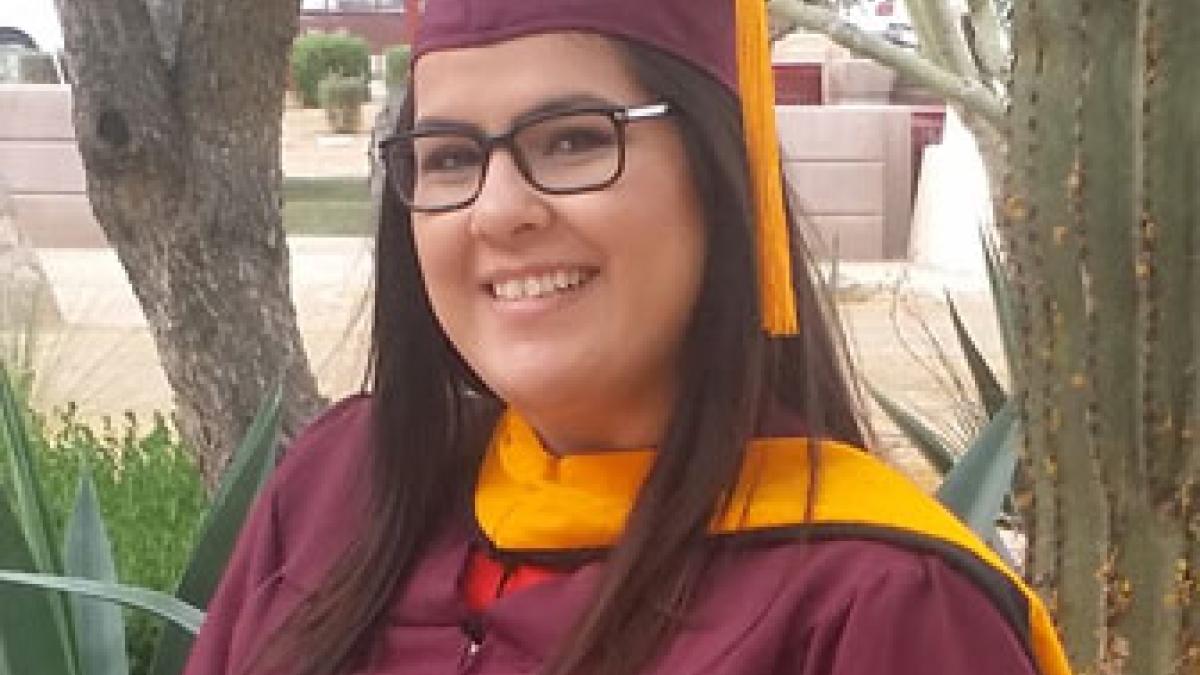ASU grad's career in planning off to a running start


As she receives her master’s degree in urban and environmental planning this semester, Stephanie Watney has not only been a top graduate student but has made professional-level contributions to several planning initiatives. And based on her work, she has been hired and is already working as a planner for a nationally recognized law firm.
In recognition of her academic achievement, leadership, commitment to planning as a career, and community service, Watney has been selected for a 2015 American Institute of Certified Planners Outstanding Student Award.
A Canadian citizen, Stephanie Watney earned an undergraduate degree in political science with a minor in geography from the University of Calgary. A member of one of Canada’s First Nation communities, she had an interest in fostering opportunities for Native peoples and worked as a student ambassador for the University of Calgary’s Native Centre, providing role modeling and encouragement to Aboriginal youth to encourage their participation in post-secondary education.
After graduating, Watney moved to Arizona.
“I chose Arizona because of its large Native populations,” said Watney. “I wanted to study the initiatives in Arizona compared with Canada.”
In Phoenix, she took a position as an intern with Native American Connections, a non-profit that focuses on improving lives of Native Americans through culturally appropriate behavioral health, affordable housing, and community development services. She determined to pursue a career in planning and chose ASU because of its active engagement with American Indian planning.
Once at ASU, she quickly took on two key roles beyond that of first-year graduate student: She became a teaching assistant for a course offered for the first time, American Indian Community Planning.
And in the same semester, she began work on what became the capstone experience for her graduate studies – a project with Arizona’s Havasupai Tribe. She synthesized and analyzed the community’s previous master plans and produced a report on current socioeconomic and infrastructure conditions including the tribe’s demography.
With this information forming a basis for thinking about future planning efforts, she worked with the tribe to develop a survey intended to gather community members’ perspectives on future directions.
While still working on the Havasupai project, Watney took on an opportunity to learn about community participation in planning for a very different setting – Arizona’s largest city. As an intern for the City of Phoenix, Watney became part of the team developing PlanPHX – an initiative to get input from Phoenix’s residents on an update to its General Plan. She took on a multitude of tasks, from researching best practices for gathering public perspectives to designing the content for MyPlanPhx.com, a web tool that offers Phoenix residents the opportunity to share their ideas online.
In her role as in intern, she also created partnerships with Arizona Local First businesses to provide incentives for citizen participation, assisted with writing and editing draft text for the General Plan update, and recruited volunteers for PlanPhx Summit, a daylong event to get input on the draft plan.
Word of Watney’s good work began to spread. When the senior urban planner at the Phoenix office of law firm Snell & Wilmer was looking to hire a new staff member, he reached out to Watney.
“After that followed an intense interview process, which consisted of three interviews,” Watney said. “I was selected as the final candidate, and began working there in March.”
In her current role as a planner with the firm, she’s responsible for zoning entitlement due diligence – ensuring that zoning is in place for specific developments/properties, researching whether a property has stipulations or conditions for development, and ensuring that all aspects of a project/property are in conformity with the zoning code.
Professor David Pijawka, who leads efforts related to American Indian community planning at ASU, mentored Watney in her graduate studies and especially her work on the Havasupai project.
“I am full of gratitude toward Dr. Pijawka and the ASU planning program for all of the opportunities I have been given,” Watney said. “Dr. Pijawka has been instrumental for my growth in the program. There are not many professors like him anymore – the program is very lucky.”
For his part, Pijawka feels Watney has been an asset to ASU’s planning program.
“Stephanie has done well in independent work and as part of a team, and has often taken leadership positions. Her professional attitude and dedication have allowed her to make very meaningful contributions to several planning efforts in her two years with us,” Pijawka said. “We’re looking forward to seeing where her career will take her.”